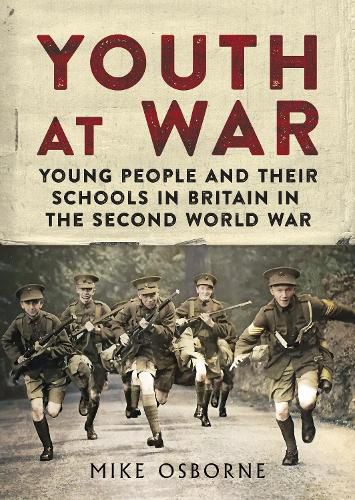Readings Newsletter
Become a Readings Member to make your shopping experience even easier.
Sign in or sign up for free!
You’re not far away from qualifying for FREE standard shipping within Australia
You’ve qualified for FREE standard shipping within Australia
The cart is loading…






The Second World War was the cause of more civilian casualties, many of them young people, than of military. In Britain, young people were on the front line, facing the threat of enemy invasion and the fragmentation of daily life. Their education was disrupted as their schools were taken over by government, the military and ARP; as pupils were evacuated and staff conscripted; curriculum was diluted and part-time schooling instituted; and concerns over food and accommodation increased. Along with the physical dangers of bombing and the increased disease caused by deprivation and social dislocation, youngsters endured psychological and emotional pressure from anxieties over home and family. Young people worked in industry and agriculture; served in the Home Guard and ARP; carried out voluntary activities in health and welfare; and prepared for military service as cadets and in uniformed organisations. School buildings aided the war effort as military HQs, training centres, research centres for weapons development and, central to ARP, especially in the cities, were often at the forefront of the bombing. This book attempts an overview of the circumstances under which youngsters grew up between 1939 and 1945 on the Home Front, with particular emphasis on the 14-18 age group.
$9.00 standard shipping within Australia
FREE standard shipping within Australia for orders over $100.00
Express & International shipping calculated at checkout
The Second World War was the cause of more civilian casualties, many of them young people, than of military. In Britain, young people were on the front line, facing the threat of enemy invasion and the fragmentation of daily life. Their education was disrupted as their schools were taken over by government, the military and ARP; as pupils were evacuated and staff conscripted; curriculum was diluted and part-time schooling instituted; and concerns over food and accommodation increased. Along with the physical dangers of bombing and the increased disease caused by deprivation and social dislocation, youngsters endured psychological and emotional pressure from anxieties over home and family. Young people worked in industry and agriculture; served in the Home Guard and ARP; carried out voluntary activities in health and welfare; and prepared for military service as cadets and in uniformed organisations. School buildings aided the war effort as military HQs, training centres, research centres for weapons development and, central to ARP, especially in the cities, were often at the forefront of the bombing. This book attempts an overview of the circumstances under which youngsters grew up between 1939 and 1945 on the Home Front, with particular emphasis on the 14-18 age group.